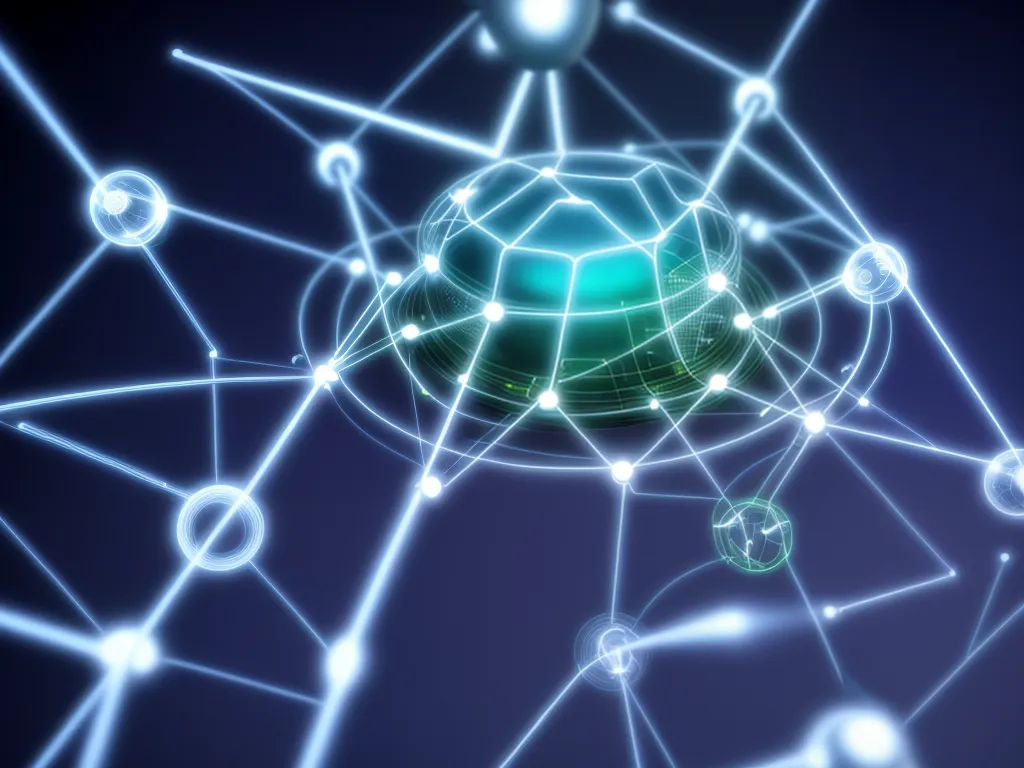
Quantum networks represent a revolutionary new form of communication that leverages the strange properties of quantum physics. As this exciting new technology continues to develop, it promises to transform how we share and transmit information.
An Introduction to Quantum Networks
A quantum network utilizes the principles of quantum mechanics to send information. Traditional networks encode data as classical bits with binary values of 0 and 1. Quantum networks, on the other hand, rely on quantum bits (qubits) that can exist in a superposition of 0 and 1 simultaneously. This enables quantum networks to encode more information per photon and transmit it more efficiently.
Some key advantages of quantum networks include:
- Faster transmission speeds – By encoding more information per photon, quantum networks can transmit data much faster than classical networks.
- Enhanced security – The quantum states used to encode data are fragile. Any attempt to intercept or tamper with a quantum transmission will alter the state of the qubits and introduce detectable errors. This enables truly unbreakable encryption.
- Long-distance transmission – Special repeaters allow quantum signals to be transmitted over long distances without degradation.
- New capabilities – Quantum networks open up new possibilities like quantum teleportation, distributed quantum computing, and highly accurate timekeeping.
The Path to Practical Quantum Networks
While the theory behind quantum networks has existed for decades, bringing this technology into the real world has proven challenging. However, steady progress is being made on both the hardware and software fronts to turn quantum networks into a practical reality.
Quantum Transmitters and Receivers
Specialized quantum transmitters and receivers are needed to send and receive quantum information. Key hardware advances include:
- Photon sources – Semiconductor devices can now generate a steady stream of photons for encoding qubits.
- Quantum memory – Cryogenic systems can store qubits for extended periods while maintaining their quantum states.
- Quantum detectors – Ultra-sensitive detectors allow the quantum state of incoming photons to be measured.
Transmission Mediums
Quantum signals degrade rapidly as they propagate across distances. Maintaining quantum coherence requires:
- Fiber optic cables – Ultra-pure optical fibers minimize signal loss and noise.
- Free-space transmission – Direct line-of-sight laser transmission can link ground stations or satellites.
- Quantum repeaters – These devices amplify and error-correct quantum signals, enabling long-distance quantum links.
Network Architecture
Commercial quantum networks will likely start small but expand to a more distributed architecture over time.
- Point-to-point links – Direct quantum connections between two locations, up to 100 km apart.
- Backbone networks – Regional networks with multiple nodes connected by quantum links and repeaters.
- Hybrid networks – Combinations of classical and quantum connections, with quantum used for selected secure links.
- Quantum internet – A possible future global network for quantum information exchange.
Applications and Benefits
As quantum networks become available, they will enable new capabilities in communication and computing:
- Secure communication – Quantum key distribution will provide cryptographic keys secured by the laws of physics. This will bolster security for finance, government, and other sensitive data transmission.
- Faster computing – Distributed quantum computing architectures will rely on quantum networks to link processors. This will unlock new horizons in computational power.
- Enhanced timekeeping – Quantum networks will allow ultra-precise atomic clocks at different locations to remain synchronized, enabling advances in navigation, telecom networks, and scientific research.
- Long-distance teleportation – Quantum teleportation uses entanglement to reconstruct the quantum state of a particle at a distant location. This could have big implications for computing and communication security.
While mainstream adoption is still roughly a decade away, the future looks bright for quantum networks. As researchers continue advancing the core technologies, quantum looks poised to fundamentally remake how we transmit and process information.












